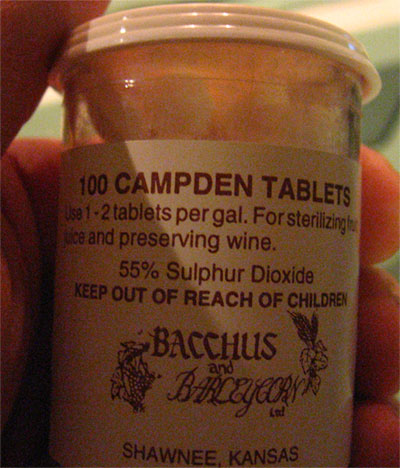
I don’t use heat when I make mead. Some people boil and skim, but I don’t believe in it. The aromatics of honey are so excruciatingly delicate, I try not to even use pasteurized honey for mead making.
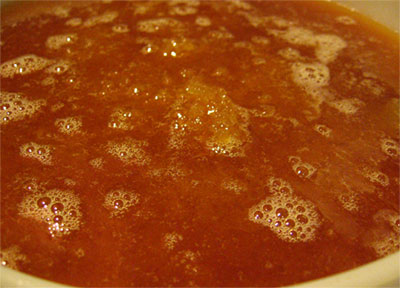
What I’m outlining here is the Rager method. I don’t mean he invented it, or that I necessarily do everything exactly as he does, because I don’t. But the fundamentals of how to make a good mead, the basis of what I’m doing here, is what I learned from Jackie Rager, an extraordinary homebrewer and winemaker, and all round great guy.
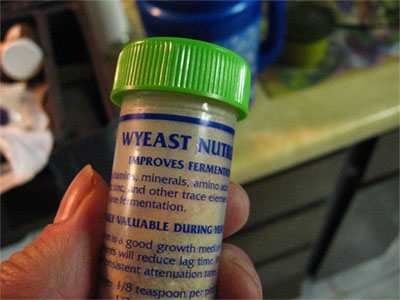
Take a 1:1 ratio of honey to water for the first step. The idea here is to dilute the honey a bit, get it to a liquid you can actually slosh about. In this case, it’s a gallon of water and 12 lbs (a gallon) of honey.
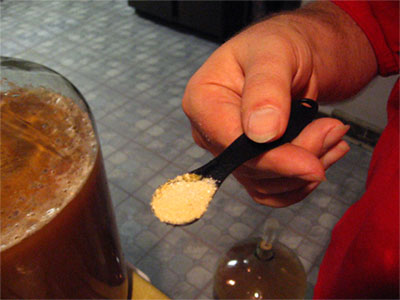
I know you’ll find recipes for mead that call for 18 to 24 pounds of honey in a five gallon batch, but that makes a heavy, syrupy dessert mead. It’s okay by the goblet, I enjoy such a beverage every once in a great while. It functions like a port or sherry when it’s finally finished. These huge meads often take years to ferment out.
At 12 lbs to a five gallon batch, the starting gravity is in the neighborhood of 1.072. Fermented to dryness, we’re talking about 9% ABV, maybe 9-1/2%. Which means you can drink twice as much of it before you’re totally faded. And the result is so drinkable, especially when you sparkle it, you’ll be glad of the lower alcohol content. Also, if you want to add fruit at the secondary, a 1.072 OG means you haven’t run out of ethanol tolerance in the yeast. Dan Davis used to make delightful pyments by racking a light mead onto grape concentrate. I’ve had good results making melomels this way, in particular a gooseberry melomel I made a few years back. Might have to try that one again.
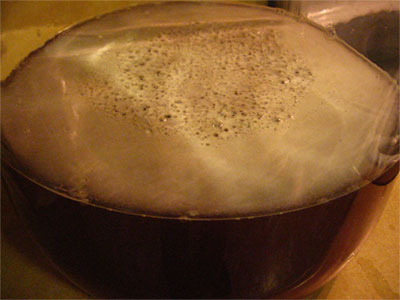
Anyway, you mix your 1:1 honey and water up and agitate it for twenty minutes or so with four Campden tablets. This is sulphur dioxide, and four tablets gets you the maximum SO2 level to kill any bacteria that might be harbored in the honey. Then you let it sit in the carboy for 24 hours to allow the SO2 to do its work and dissipate. It still smells like ass a day later, but it’s down to levels that won’t shock your yeast culture.
After 24 hours you add three more gallons of water and pitch. This is where I depart, somewhat, from Rager’s method. As far as I know, he usually pitches a starter straight into the mead, and I never do.
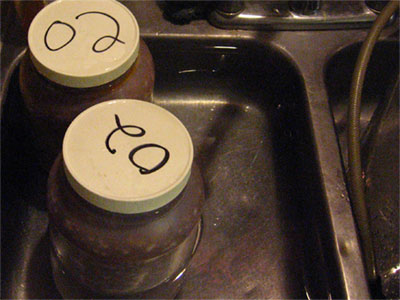
Some homebrewers don’t like to make starters. Enough of them that White Labs and Wyeast both now sell what they claim are pitchable cultures. The idea is there are so many yeast cells there is no need for a starter. Maybe, but I make a starter anyway. The more yeast, and the more awake and hungry they are, the less lag time, the less stressed the yeast (stressed yeast produce undesirable flavors and aromas), and the more rapid and thorough the fermentation. Slow ferments are good, as long as the slowness is from temperature control, not the yeast struggling to do the job.
And meads are notoriously hard to ferment. Honey never spoils because it’s acidic and so concentrated that microbes just can’t metabolize it. Dilution overcomes part of this, but it still tends to lack yeast nutrients and the literature is full of fixes for meads with stuck fermentations.

So I add yeast nutrient and oxygenate the must and all that, which I’m sure Jackie does as well, but I treat a five gallon batch of cider as my starter for a five gallon batch of mead.
I rack the cider, then pitch the lees of it into the mead must. By having a massive culture of healthy yeast that just finished fermenting a batch of apple juice, I get a fast start and a thorough ferment of my meads every time. Not only have I never had a mead hang half-fermented months after I pitched it, I typically have mead on tap before a lot of guys I know would be thinking about racking the stuff.
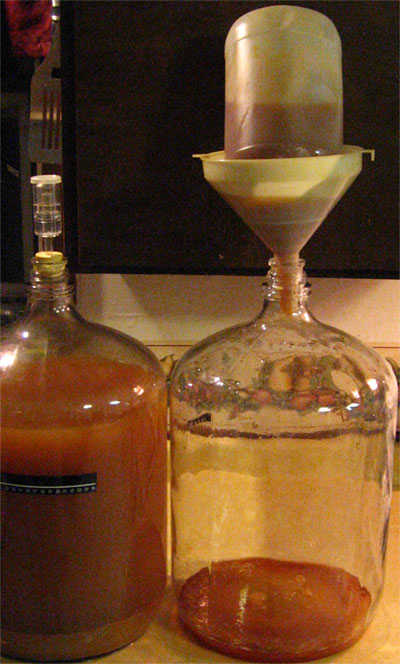
* Yes, I got stung. That's not the half of it: if you want to have a truly bad back, an apiary is the key. Keep at it and you won't have to wonder if you'll have a bulging disk that requires surgery, you'll only wonder when it's happening.

No comments:
Post a Comment